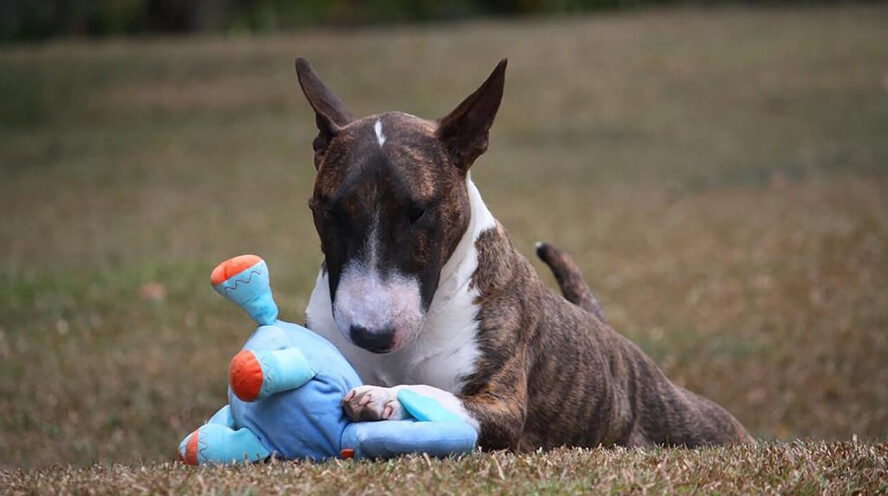Welcoming a dog into your family can be indeed a joyous experience! There’s something about having a puppy in the family that makes for a happier life. Perhaps it’s the fact that dogs are just entirely genuine little creatures, even if they are some dog breeds are a bit mouthy.
There’s no denying that it’s essential to take your time and consider which dog, and take it one step further, which breed specifically, will fit in well.
After all – it’s not just difficult for you if you end up welcoming a dog with more significant exercise requirements than you can keep up with. It’s also incredibly unfair on the poor pup – and this is where many behavioral issues tend to arise.
We’ve popped together a list of dog breeds that are most prone to becoming mouthy. While good training can overcome or deter this – it can be a critical consideration for dog lovers with small children.
Why Are Some Dog Breeds Mouthy?
Most mouthing is normal dog behavior – it is a natural, intuitive way dogs interact and explore the world. However, sometimes, mouthing can be a sign of aggressive behavior, and it is challenging to tell the difference between the two. If you believe your dog shows signs of aggression, you might need the help of a professional trainer to stop it.
Other reasons for nipping in some dogs include:
- Play mouthing
- Excitement
- Exploration ( puppies)
Mouthy Dog Breeds
1. Akita
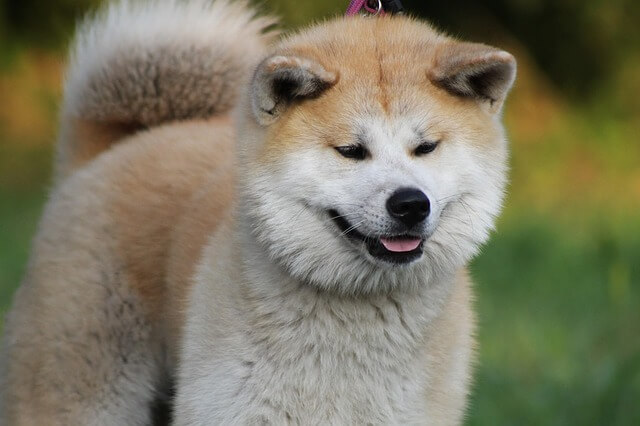
The Akita is a large friendly breed that suits the structure of a home that will ensure good training from a young age. Bred to hunt, the Akita is alert, intelligent, and somewhat independent.
The good news is that the Akita is highly trainable. Still, the bad news is – without training, they can quickly become incredibly rambunctious. Combined with their size – what they think of as harmless playing could turn to tears, especially when kids are involved.
Akita is one of the mouthy dog breeds and prone to turning to destructive behaviors when their environment isn’t physically and mentally enriching.
2. Bernese Mountain Dog
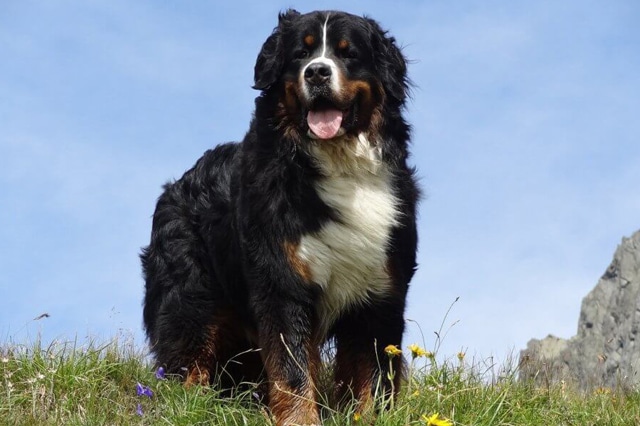
The Bernese Mountain Dog is one of the most popular yet mouthy dog breeds, with a loving temperament and medium energy level. They’re an ideal family dog whether you live in the country or the city as they tend to adapt well to most environments.
While lovable to the extreme, these big adorable goofballs do have an annoying habit of bouncing around full of the joys of spring… with their mouths wide open. As a result, any human who gets caught in the crosshairs is liable to meet Bernie’s sharp teeth.
3. Cavalier King Charles Spaniel
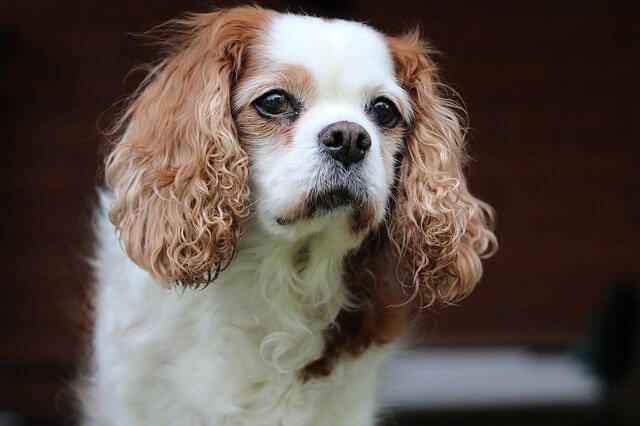
With a history tracing back to English nobility, the Cavalier King Charles is a dog with two personality sides. The breed’s calm and dignified side (which was once owned by British aristocracy) is still clearly apparent in the breed’s regal appearance!
And then, on the other side, if a squirrel were to leap by, you’re likely to find your Cavalier King Charles Spaniel launch into action. They’re likely to take chase – with little to no regard to whomever they leave in their wake, whether they’re of noble blood or otherwise.
4. Chihuahua
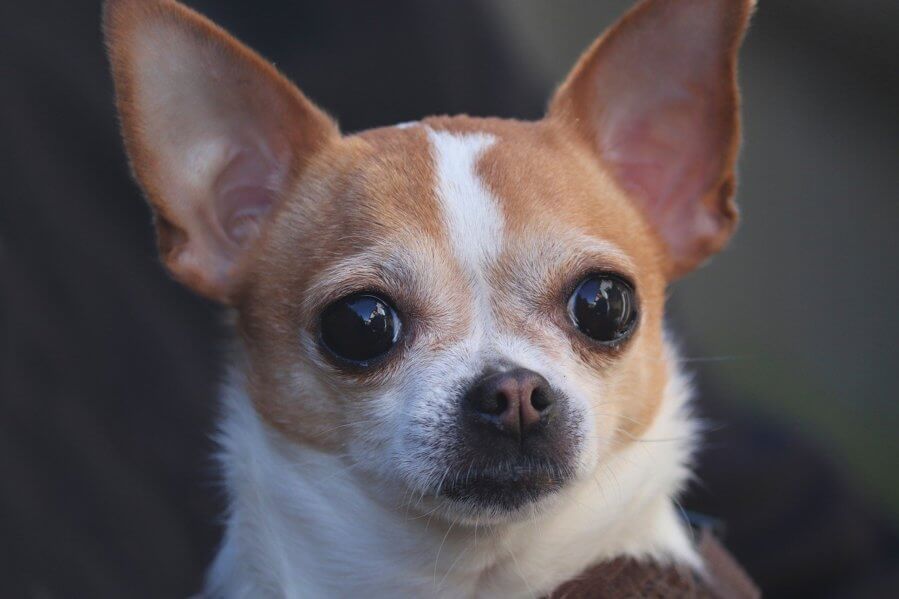
The Chihuahua is a small dog with a big attitude, and while they can make an excellent canine companion, it is essential that adequate training takes place from a young age. The Chihuahua tends to step up to the alpha’s role in the home if they don’t feel that you’re acting like the alpha.
One of the issues with this is that Chihuahua is a mouthy dog breed, and can become overly aggressive towards visiting guests and are prone to nipping. Even at members of the family in the same household if they deem them to be a threat.
The good news is retraining is possible with time, positive reinforcement, and patience; even if you happen to adopt a Chihuahua that has come from a bad situation and slipped into the habit of using their mouth out of defensiveness or aggression.
5. Chow Chow
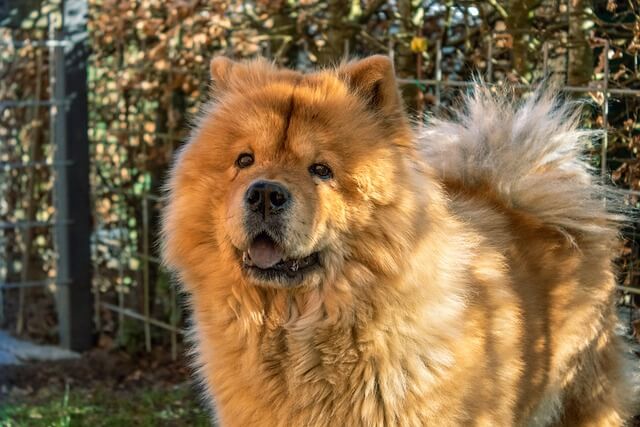
The Chow Chow is one of the unique dogs in terms of both looks and personality. While they can be quite stubborn in many ways, house training is not one of those – and many liken the breed to a cat due to their cleanliness.
Notoriously aloof with strangers, you must socialize your Chow Chow extensively from a young age. Unfortunately, many tend to see the breed’s appearance and bring them into their homes purely because of this – with complete disregard for their unique temperament and requirements.
6. Dachshund
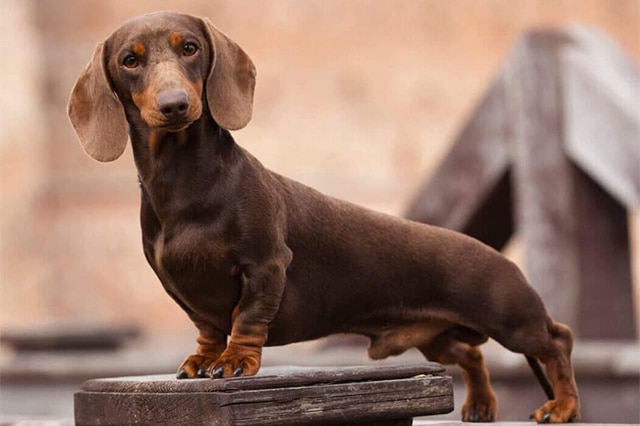
An incredibly popular dog breed, likely due to their utterly adorable appearance and incredibly expressive eyes, the dachshund can be an excellent choice for the next canine member of your family.
Like any dog breed, the dachshund’s way of exploring the world is with its mouth. One area that has shown to improve breeds’ mouthiness is if they stay with their mother for a more extended period.
It is because when puppies stay with the mother for a longer period, it’s her who teaches the young pup what and what is not acceptable.
7. Doberman
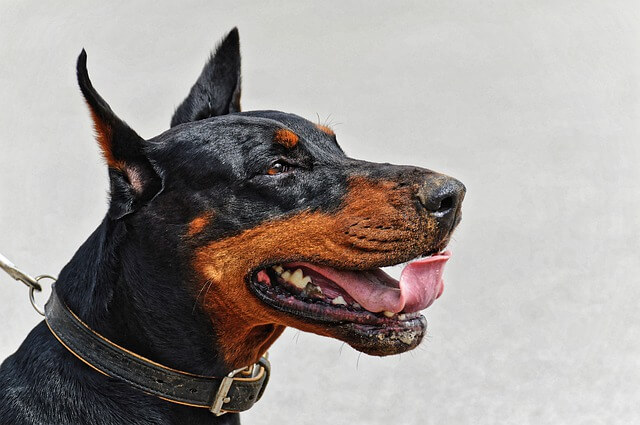
A large, striking yet mouthy dog breed, the Doberman has a reputation as an excellent guard dog, and just from their appearance alone – they’re a fabulous deterrent for any would-be intruder.
The Doberman does require a great deal of exercise, and without this, he can quickly resort to destructive behaviors to entertain himself.
8. English Foxhound
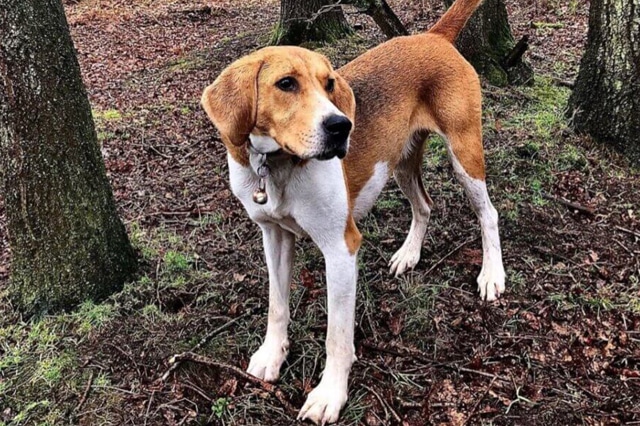
The English Foxhounds are happiest when they have a job to do. Without a purpose, this breed can struggle. That’s not to say that an English Foxhound will only be happy as a hunting or working dog. Joining in with hiking or biking with an active owner can be just as fulfilling!
With a relatively high energy level, the Foxhound does best in a home that’s active, patient with the challenges of training a more independent breed, and with at least some experience with scent hounds.
9. German Shepherd
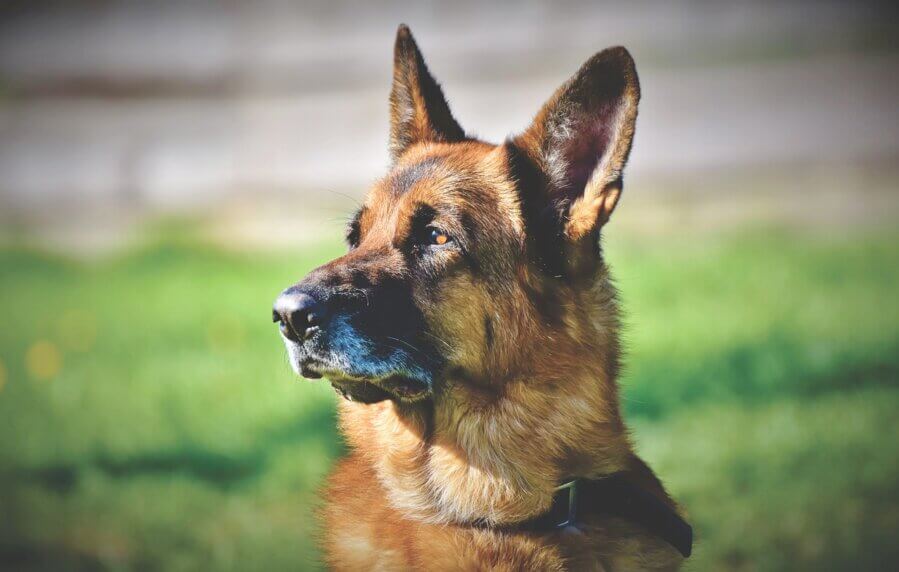
The German Shepherd is a brave and loving breed, renowned for their courage and an unbreakable bond with their humans!
It is probably why you still see German Shepherds used to this day as police dogs around the world!
One issue you can come across with the German Shepherd is that they can be too quick to leap into action when they feel that they need to protect their humans. Yet, with adequate training from puppyhood, you shouldn’t have any issues with this, sometimes mouthy, dog breed.
The best way to help your dachshund live longer?
Watch our video to find out!
10. Golden Retriever

The Golden Retriever is famed for its prowess as a family dog, but don’t be fooled – mischief and mouthiness is a common trait in puppyhood!
Naturally a mouthy dog breed, some dog lovers attempt to train their Retrievers out of this natural trait – but a better solution is to train the dog as to what is acceptable.
Having plenty of playtime with toys that they can sink their teeth into can provide your Golden Retriever with the mouthing time that they crave. Without having to sacrifice any furniture to chewing!
11. Jack Russell
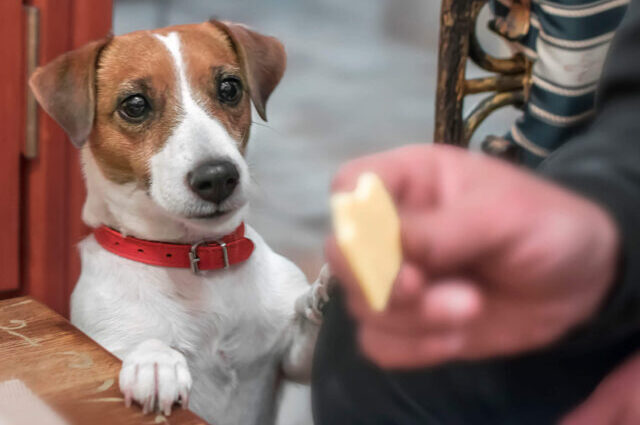
Ah, the Jack Russell, a pint-sized pooch with more attitude and personality than most large dogs! This breed never grows up; their play drive and goofiness isn’t something that will disappear as they age.
It is ideal for active and playful families, but the Jack Russell is a mismatch for families who enjoy a sedentary or calm lifestyle.
Notorious for being quite the yappy and mouthy dog breed, Jack Russell needs plenty of physical and mental enrichment on a daily basis to avoid the bad habit.
12. Labrador

The Labrador is the most famous family dog and a highly successful service breed renowned for its work as a guide dog for the blind and emotional support dog.
The Labrador enjoys having a purpose, and most of all – they love carrying things in their mouth. It goes back to their original purpose, as their name Labrador Retriever hints at – they were bred to be just that, a retriever!
But while this is a typical trait, it’s essential to train your Lab from a young age that being too rough is not acceptable.
13. Maltese
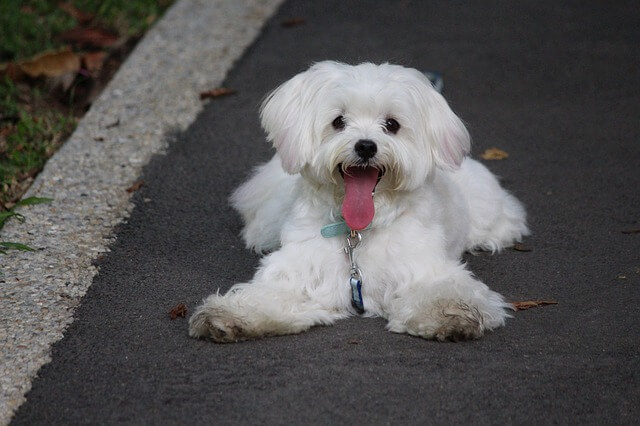
The Maltese is a dog breed that falls into the toy category, but while falling into the category of “toy” dog, they most certainly shouldn’t be treated like one.
As with any dog, it’s essential to treat them just as you would with any large breed, and that includes training them to be gentle. Many owners ignore the nipping and biting of smaller breeds as they aren’t able to do as much harm as a large breed. It is a big mistake.
All mouthy dog breeds, regardless of their size, should be taught to be well-mannered, as while this roughhousing might be ignored by adults – children are likely to be more hurt.
14. Pitbull
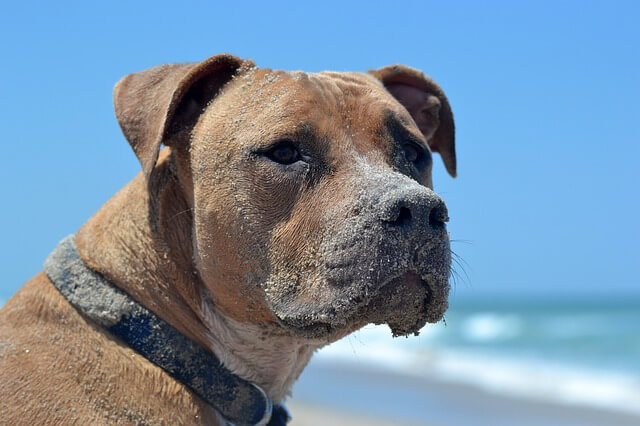
The Pitbull is a breed (or rather, a group of breeds) with a bad reputation. But while they might have incredibly powerful jaws and large teeth – with proper training, Pitbulls are a docile and lovable breed for any family!
Of course, nature comes into any mouthiness of the Pitbull, and as former hunting and fighting dogs – they are more prone to use their mouths. It’s incredibly important to remember that this is due to humans breeding for this trait, and not blame the dog.
Pitbulls are one of the most loyal breeds around, and when trained using positive reinforcement methods – they react and learn incredibly well.
15. Poodle
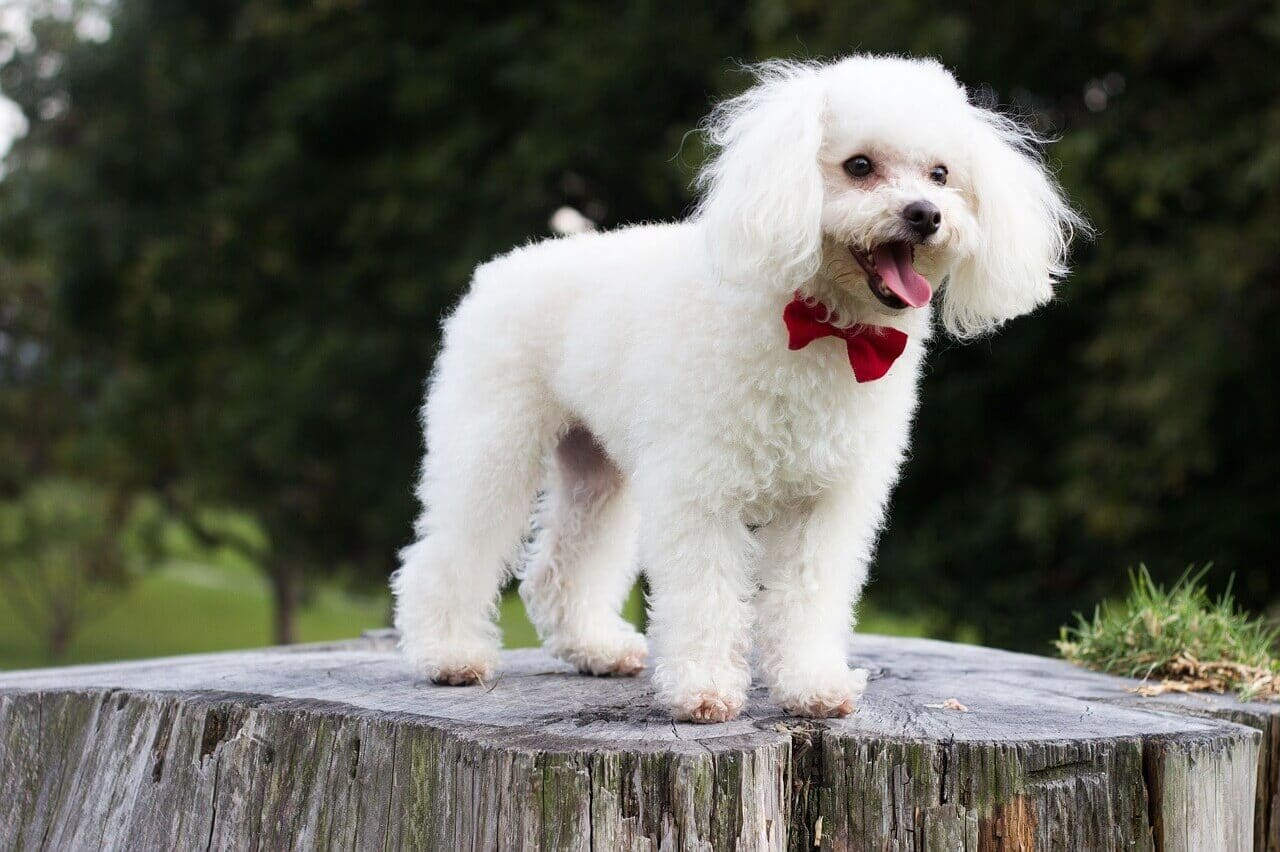
Many describe the Poodle as a regal breed, with luscious locks and graceful movement – it’s not hard to see why. But, alas – the Poodle is more of a goofball than many realise. While they might look like the quintessence of dignity, they are one of the biggest clowns in the dog world!
The great news is that the Poodle also ranks number two in the list of the most intelligent dog breeds. So, training is pretty straightforward – especially when house rules are in place from a young age.
16. Portuguese Water Dog
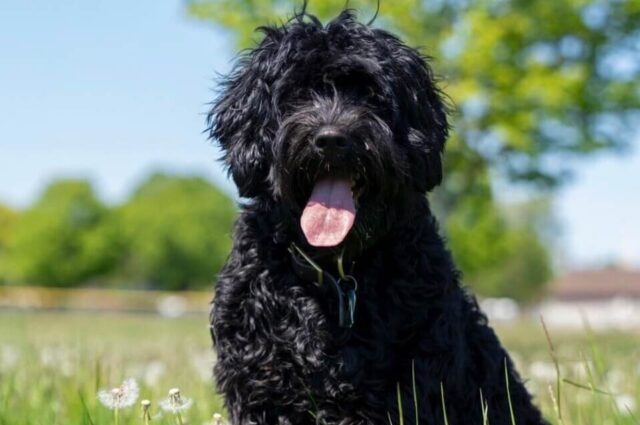
One of the mouthiest dog breeds around, the Portuguese Water Dog‘s history traced back to working on fishing boats and carrying messages. As such, they are most comfortable with something in their mouth.
Many Portuguese Water Dogs owners have been able to redirect this mouthy energy to other activities, and the breed has had a great deal of success in Flying Disc competitions.
17. Tosa Inu

The Tosa Inu has quite the reputation, with many dog trainers strongly advising against this mouthy dog breed.
It is mainly as most dog owners don’t have enough experience to cope with Tosa Inu ownership demands.
The Tosa is a breed with an incredible bite force, hailing from Japan with roots as a fighting dog. The breed, therefore, has an incredibly high prey drive. Although aggression towards humans is rare – it’s common towards other dogs and animals.
Only the most experienced dog owners with a solid training plan and a structured lifestyle should even consider this breed.
18. Vizla
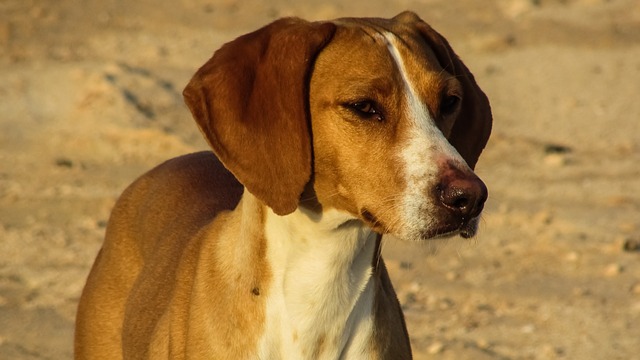
The Hungarian Vizla, with its sleek coat, is a stunning sight to behold, but when they don’t have enough mental and physical enrichment in their lives – Vizlas are notorious for causing trouble.
Practically, a bored and untrained Vizla will wreak havoc in every way that they can. But the good news is, Vizlas are incredibly curious and fast learners, so they find it easy to turn their attention to good habits and behaviours.
19. Weimaraner
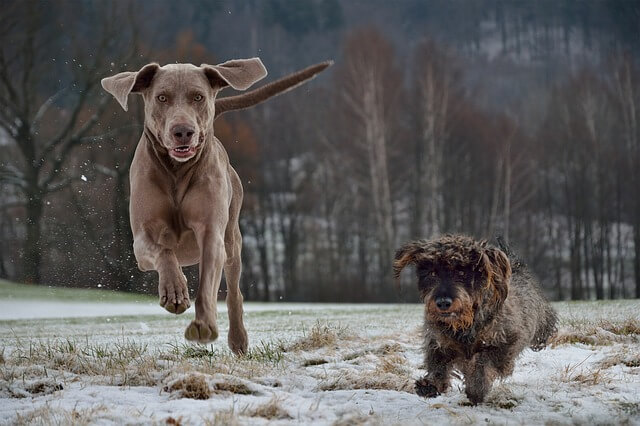
This large mouthy dog breed is incredibly friendly, highly obedient, and adores spending time with their humans – however, there is one trait of the Weimaraner that’s suit undesired.
And that’s the fact that they’re well known for being an incredibly mouthy dog breed – often attempting to use their mouths to guide their human in play. But obviously, with those large teeth, it’s effortless for Weimaraner to cause minor injuries.
As an incredibly trainable breed, a good training regimen can help to alleviate this. But the fact of the matter is, the Weimaraner likes to use their mouth, so you need to ensure that there’s playtime with toys that can satisfy that urge.
20. Yorkshire Terrier
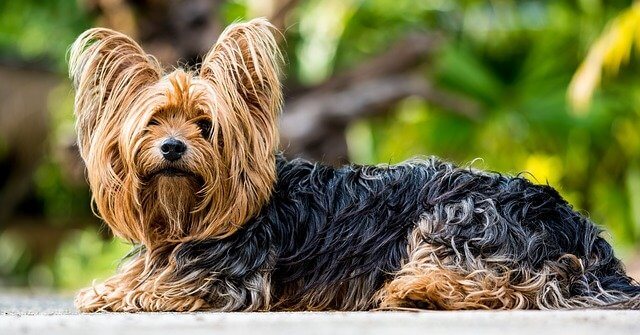
With long flowing locks, often held back from the face with a bow – many assume that the Yorkie is a delicate little breed that enjoys nothing more than being waited on by its owner. Alas, this toy dog breed is surprisingly feisty!
Puppy training is a must, as, without the structure, the Yorkshire Terrier can attempt to rule the roost in their home!
Mouthy Dog Breeds – Final Thoughts
All dogs can go through bouts of mouthiness – especially when going through the teething stage, but the breeds we’ve highlighted above are all prone to mouthiness into adulthood.
However, while you should consider the breed of dogs before deciding whether they’ll fit into your family – this article is designed to prepare you for ownership of these lovely breeds and not scare you off of owning them.
In fact, many of the breeds that made our list; also feature in the list of the world’s most popular dog breeds!
Written by: Nadia A.


